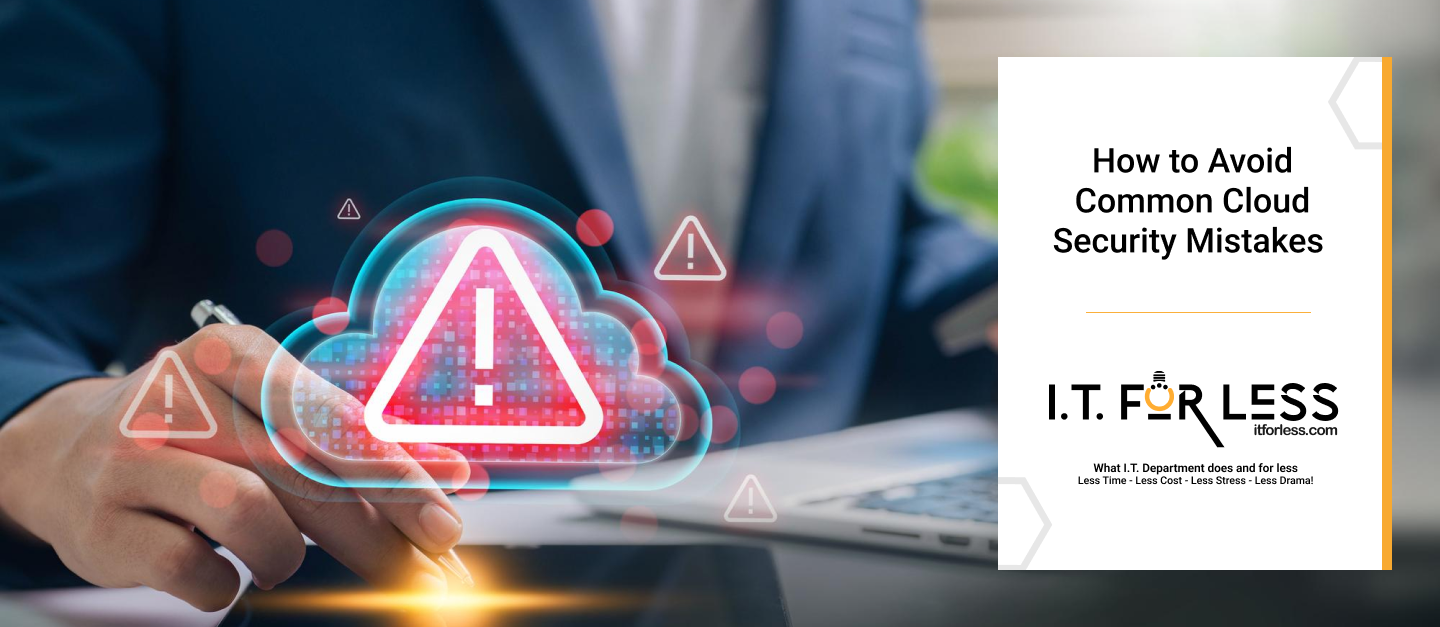Cloud computing has become the norm for modern businesses, enabling agility, scalability, and cost-efficiency. But with great power comes great responsibility. As we’ve helped clients across industries migrate and operate in the cloud, we’ve seen one recurring theme: most breaches and issues aren’t due to advanced hacking, but basic mistakes.
In this comprehensive guide, we’ll explore the most common cloud security mistakes made by businesses and how you can avoid them. Whether you’re new to the cloud or looking to fine-tune your existing environment, this article will help you strengthen your defenses without blowing your budget.
Mistake #1: Misconfiguring Cloud Resources
Misconfiguration is one of the most widespread — and dangerous — mistakes in cloud environments. Leaving storage buckets publicly accessible or failing to set permissions correctly can expose sensitive data.
How to Avoid It:
- Use security configuration templates or policies.
- Regularly scan your cloud for misconfigured resources.
- Automate configuration management using tools such as AWS Config, Azure Policy, or Terraform.
Mistake #2: Weak Identity and Access Management (IAM)
Many businesses grant overly broad access permissions, which can lead to data exposure or abuse. IAM is often set up once and forgotten.
How to Avoid It:
- Apply the principle of least privilege — give users only the access they need.
- Use role-based access control (RBAC).
- Rotate credentials and access keys regularly.
- Implement Multi-Factor Authentication (MFA).
Mistake #3: Lack of Encryption
Data that isn’t encrypted is vulnerable, whether at rest or in transit. Surprisingly, many companies still fail to enable encryption in their cloud setups.
How to Avoid It:
- Encrypt data at rest and in transit.
- Manage encryption keys securely, ideally using a Key Management Service (KMS).
- Enforce encryption policies at the organizational level.
Mistake #4: Not Monitoring or Logging Activity
Without logs or monitoring, you’re blind to what’s happening in your cloud. Incidents often go unnoticed until it’s too late.
How to Avoid It:
- Enable logging features like AWS CloudTrail, Azure Monitor, or Google Cloud Audit Logs.
- Use SIEM (Security Information and Event Management) tools for centralized logging and alerts.
- Set up real-time notifications for anomalies.
Mistake #5: Poor Backup and Disaster Recovery Planning
Cloud doesn’t automatically mean your data is safe forever. Without proper backups, accidental deletions, malware, or outages can result in significant data loss.
How to Avoid It:
- Implement automated backup solutions.
- Store backups in multiple regions or clouds.
- Test your disaster recovery plan regularly.
Mistake #6: Ignoring Compliance Requirements
Data protection laws like GDPR, HIPAA, and CCPA carry heavy penalties. Non-compliance is often due to negligence or misunderstanding cloud responsibilities.
How to Avoid It:
- Know which compliance standards apply to your industry.
- Conduct regular compliance assessments.
- Use tools that help map compliance frameworks to your cloud architecture.
Mistake #7: Untrained Staff
Even with the best tools, human error can undermine your entire cloud strategy. Employees often click on malicious links, misconfigure resources, or share data carelessly.
How to Avoid It:
- Provide regular cybersecurity training.
- Simulate phishing attacks.
- Educate staff on best practices for sharing and storing data.
Mistake #8: Using Unsecured APIs
APIs are essential in cloud environments, but unsecured or poorly coded APIs are a major vulnerability.
How to Avoid It:
- Use authentication and authorization controls for all APIs.
- Validate all inputs and outputs.
- Monitor API traffic for unusual behavior.
Mistake #9: Overlooking Shared Responsibility
Cloud providers secure the infrastructure, but you are responsible for securing your data, applications, and user access.
How to Avoid It:
- Understand the shared responsibility model for your provider (AWS, Azure, GCP, etc.).
- Clarify what your job is vs. the provider’s.
- Build policies and protections around your specific responsibilities.
Mistake #10: Not Partnering with a Cloud Security Expert
Trying to do it all yourself can lead to gaps and oversights. Many small businesses don’t have the in-house expertise to manage cloud security comprehensively.
How to Avoid It:
- Partner with a trusted MSP like I.T. For Less.
- Get 24/7 monitoring, audits, and support.
- Leverage our expertise to build a scalable, secure, and affordable cloud environment.
Final Thoughts
Cloud security doesn’t have to be complicated or expensive — but it does need to be intentional. Avoiding common mistakes can save you from costly breaches, downtime, and compliance headaches.
At I.T. For Less, we’re here to simplify your cloud journey. Whether you’re setting up a new environment or optimizing an existing one, we bring expert guidance, proven strategies, and cost-effective solutions to the table.
Ready to secure your cloud the smart way?
📧 Contact us | 📞 Schedule a Free Consultation | 🌐 www.itforless.com
